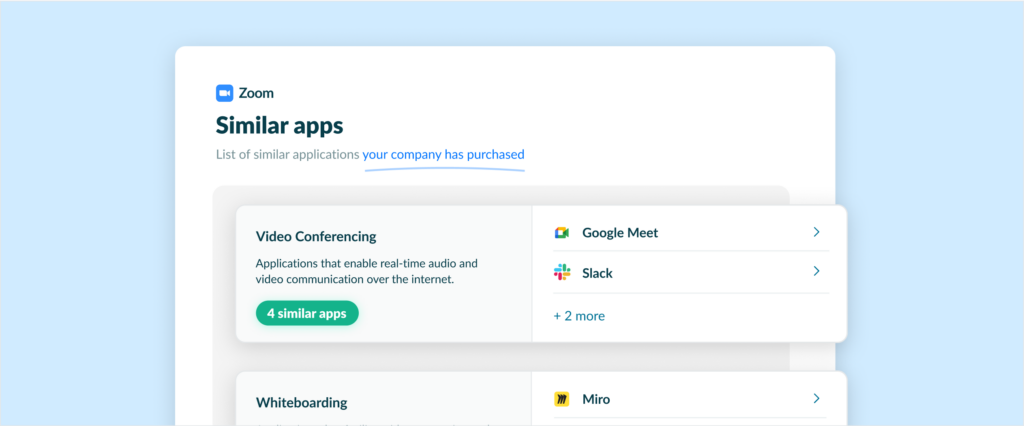
Top 5 stats IT leaders should know about SaaS Management
How well do organizations know the SaaS apps their teams use? Not just the big ones like Zoom, Slack, and Salesforce, but all the smaller ones used outside of the watchful eyes of IT?
To find out, we asked IT leaders what their SaaS portfolios look like, along with the pain points they have in managing their ever-growing list of SaaS apps.
The answers to our questions show that when it comes to visibility into the tools not managed by IT, companies are increasingly in the dark. And with most businesses now relying on more than 200 SaaS applications in their operations, that’s a big problem.
In this post, we highlight five important stats that you can use as a starting point to take stock of your own SaaS management processes. As you read on, ask yourself questions like: Do you lack visibility into tools not managed by IT? How does your org track employee usage of tools? Check out the full survey results for more insights into the current state of SaaS management.
5 Stats IT Leaders Should Know About SaaS Management
Stat 1: 79% of orgs use SaaS for more than a quarter of their business apps
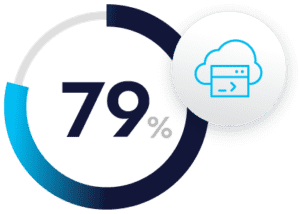
These numbers aren’t particularly surprising, given the number of SaaS apps designed for enterprises. However, it highlights just how important SaaS has become in day-to-day business operations, especially when you factor in the dramatic increase in cloud adoption. In fact, Gartner projects worldwide IT spend on enterprise software will grow to over $669 million in 2022, an increase of 26.4% from 2020.
Stat 2: 48% spend too much time on manually provisioning and managing apps
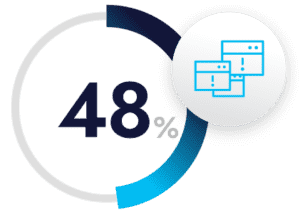
In our survey, nearly half of IT leaders said their team is spending too much time manually provisioning and managing SaaS tools. That translates into a lot of resources and money that can be better spent deploying new technologies or resolving other support requests.
The rapid adoption of SaaS applications has left orgs flat-footed when it comes to managing those tools. And the global pandemic has only amplified this problem by forcing companies to ramp up their remote work capabilities.
With employees spread far and wide, it’s no wonder IT teams are facing an uphill battle in effectively monitoring and managing apps. Which brings us to…
Stat 3: 59% say they lack visibility into tools not managed by IT
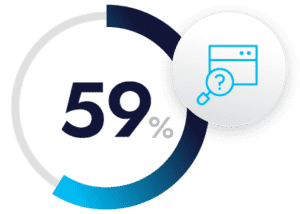
Not being able to see the SaaS apps owned by individual teams can have very real consequences. From a security standpoint, it’s critical that apps comply with your company’s protocols. But when IT isn’t aware of shadow IT tools, they have no way of evaluating compliance with industry certifications like SOC2, GDPR, and CCPA.
When IT lacks visibility into team-owned tools, they can’t identify whether departments are using different apps with similar functionality. Having duplicate apps can result in fragmentation and lower productivity among employees. For example, if your company has 4 or 5 collaboration tools, employees may face difficulties communicating and working together on cross-departmental projects.
Then there’s the issue of simple cost control, and a company’s inability to effectively manage it without visibility into all of the tools being used.
Stat 4: 99% say their day-to-day IT operations are impacted by SaaS pain points
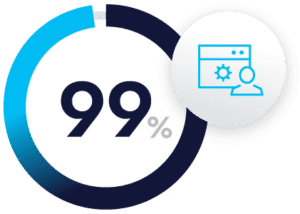
You read that right. Pretty much all of the leaders we surveyed are dealing with substantial pain points in managing SaaS apps.
The reason is simple: SaaS portfolios are increasingly complex, and managing those tools requires more sophisticated processes. IT orgs must now contend with significant challenges when managing SaaS, including:
- Limited or no oversight of shadow IT
- Maintaining security and compliance across the full app portfolio
- Time spent provisioning licenses and managing tools
- Overseeing the sheer number of apps
- Trying to see and control total app spend, including shadow IT
- Lack of visibility into how employees are using tools
- Inability to identify and consolidate duplicate apps
Stat 5: 50% of organizations depend on usage reports from SaaS providers
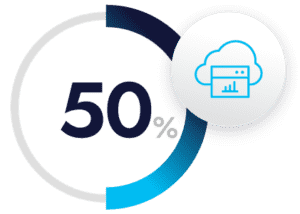
While relying on your SaaS vendors for greater visibility into usage may sound like a good idea, the reality is that usage reports are a mixed bag.
For example, some providers may only be able to tell you how many of your employees regularly log in to their application. That’s not very helpful for understanding how the app is being used — especially at the feature level.
Beyond the quality of visibility, the simple act of requesting these usage reports from providers takes time away from more important tasks. Again, most companies use hundreds of SaaS apps, which makes filing requests and analyzing the results a bigger lift than it needs to be.
What all these stats reveal in a nutshell
With enterprise SaaS adoption (and spend) only increasing, companies are struggling to maintain — or, in many cases, gain — visibility into the tools their teams are using.
This lack of visibility taxes IT departments and can easily lead to overspending on applications that are duplicated, underused, or have been outright forgotten. It also creates an environment where security and compliance requirements are missed, leading to security risks and more.
To learn more about the challenges of SaaS management, download our full report.
About Productiv:
Productiv is the IT operating system to manage your entire SaaS ecosystem. It centralizes visibility into your tech stack, so CIOs and IT leaders can confidently set strategy, optimize renewals, and empower employees.
Learn more today